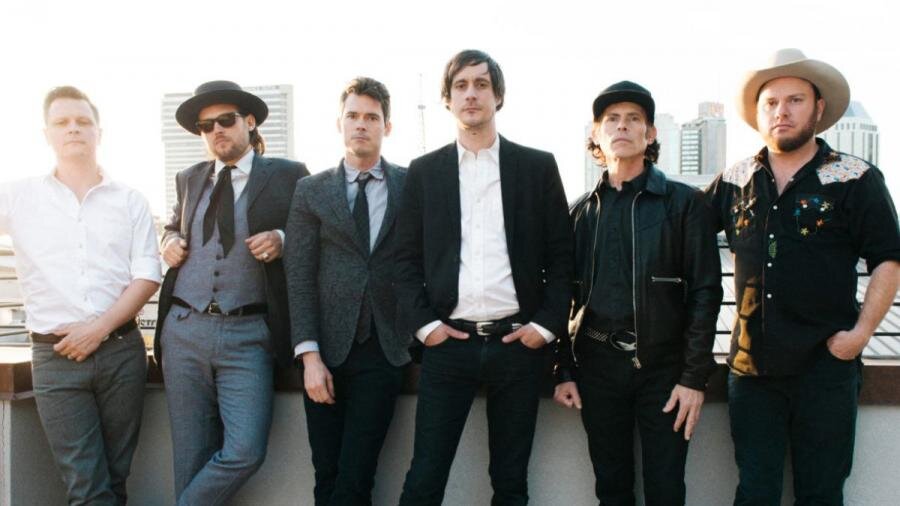Old Crow Medicine Show Shows its Love for "Blonde on Blonde"

Last week, the Americana band covered Bob Dylan's 50-year-old album within respectful guidelines.
I’ve been more interested in Bob Dylan live than on record since I saw him remake “Maggie’s Farm” as punk zydeco at the Saenger one time. The afterlives he gives his songs speaks to the punk in me because they inevitably piss off the faithful who just want to hear him play his songs “right,” and because those interpretations open up facets of the song. Not all alterations are radical or contrary. When he sings “Like a Rolling Stone” these days, he usually does so with more charity than he once did. Then again, some songs get Frankensteined into brand new things, including a version of “All Along the Watchtower” at the Lakefront Arena that ended up with an entirely new melody and rhythm. During some of his Jazz Fest sets, friends and I would huddle at the start of each song until we could ID the song, at which point we could appreciate the way one version spoke to or commented on the other.
Thursday night at The Orpheum, Old Crow Medicine Show split the Dylan difference when it played Blonde on Blonde in its entirety. The Americana band interpreted the songs as well, but unlike Dylan, it colored inside the lines. The project wasn’t a search for new meanings or an exploration of unexplored phrases; it was a celebration of Dylan. The first performance was commissioned by the Country Music Hall of Fame to celebrate the 50th year of album’s release, and it wasn’t looking for Mangled on Mangled. It wanted to hear country music’s roots in Dylan’s music, and Old Crow was the right band by temperment and ability to give it to them.
The band sounded most authoritative when it could gently transform songs into bluegrass as it did when it played “Pledging My Love” at a track meet pace, or when the band moved to the lip of the stage to play bluegrass breakdowns during “Obviously Five Believers.” Bluegrass didn’t sound like a default setting though, and when the band played “Stuck Inside of Mobile with the Memphis Blues Again,” it blended with a Band vibe to sound, well, like The Band. A little more Band would have been appreciated in “Visions of Johanna” and “Sad Eyed Lady of the Lowlands,” when the natural ebbs and flows integral to the way it worked created energy and motion in arrangements that didn’t have any built in. Old Crow’s rigorously spot-on musicianship meant that the group locked into arrangements and kept playing them, which made the long songs simply seem long as the arrangements ran out of life before they ran out of words.
Throughout the show, Old Crow made countless smart arrangement decisions. Singer Ketch Secor and guitarist Chance McCoy wheezed through twin rack harmonicas on “Rainy Day Women #12 & 35” and plucked the melody chorus on twin fiddles during “One of Us Must Know (Sooner or Later),” making the song more delicate and attractive. Without the harmonica, the “Norwegian Wood” echoes in “Fourth Time Around” came through more clearly. Still, these changes tweaked the sound but not the meaning. The only new arrangement that meaningful affected the song was “Leopard-Skin Pill-Box Hat,” which guitjo player Kevin Hayes sang in a carnival barker’s theatrical twang while he danced a cartoonish soft shoe while the rest of the band stood together and squatted and stood up in goofy synchronization. Still, his voice and the arrangement didn’t change the meaning as much as it all communicated that the song is not worth taking seriously at all.
The show was fun, but it made me think about the all-star 30th anniversary celebration of Bob Dylan from Madison Square Garden. After an hour or two of the biggest stars in music covering his songs, Dylan finally came out to sing “It’s Alright Mama (I’m Only Bleeding)” in his most monotone snivel. After that, he seemed shoehorned into a version of “My Back Pages” with Roger McGuinn, Tom Petty, Neil Young, and Eric Clapton all clearly laying the path of melodic breadcrumbs for him to follow before Dylan took a verse. Then, after George Harrison finished the song, everybody came out to sing a faithful “Knocking on Heaven’s Door,” and Dylan moved to the back of the stage, where he looked defeated. The night spent hours honoring his recorded catalogue more than him, and after he asserted what he thought his art should sound like in 1993, the producers and the rest of the musicians promptly and good-naturedly countered by getting the moment back to the records as people knew and loved them.
The emphasis then and Thursday night on Dylan’s recordings more than Dylan feels like an unintentional slight, as if Bob’s job is to keep the recordings and not the songs alive. Old Crow Medicine Show’s Blonde on Blonde was an honorable, entertaining take on the album that only dragged during “Sad Eyed Lady of the Lowlands,” but if Dylan avoids all undue piety when approaching his material, shouldn’t others as well? On Thursday night, the band seemed to be better connected to the album than the guy who made it.






